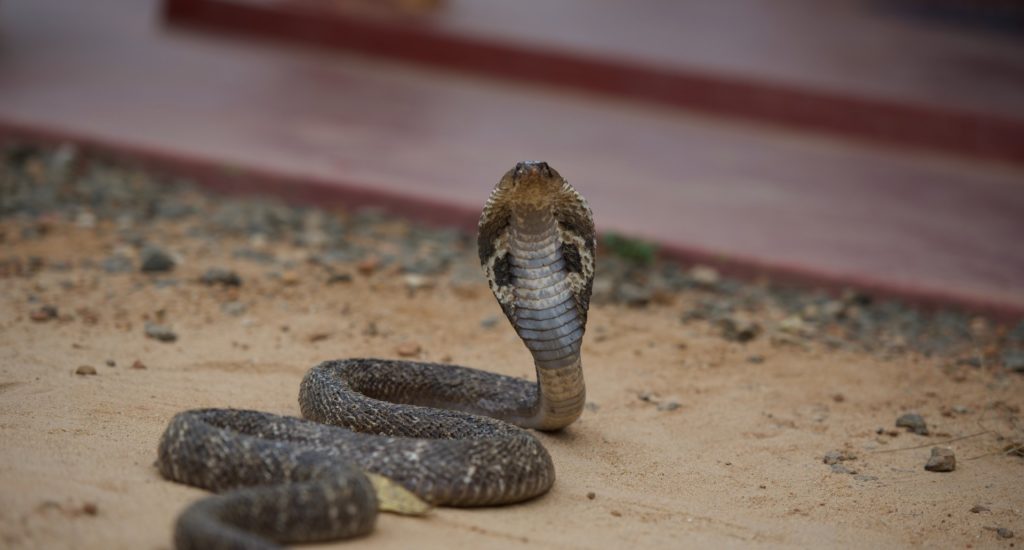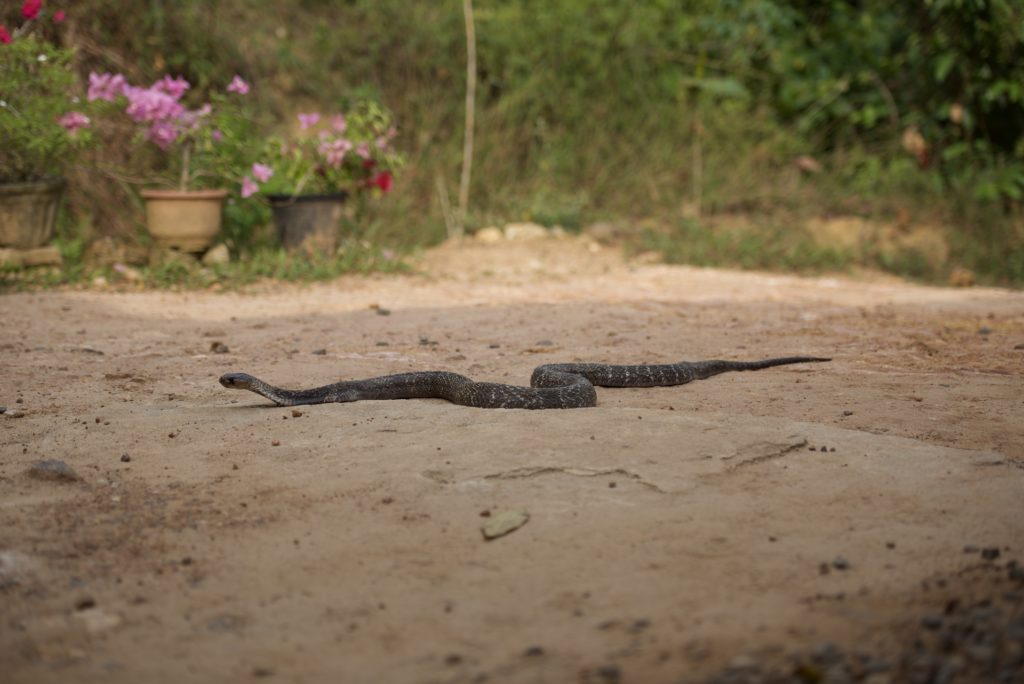Simple steps can cut snakebite deaths

A spectacled cobra in Sri Lanka. Credit Harrison Carter
Scientists have called for simple, effective steps to cut the number of people bitten by venomous snakes.
About 140,000 people die each year from snakebites worldwide, and another 400,000 are left with permanent disability.
The World Health Organisation now recognises snakebites as a “neglected tropical disease”, and has committed to halving snakebite deaths and disabilities by 2030.
A new study – by an international team led by the University of Exeter – surveyed people in Tamil Nadu, a snakebite hotspot in India.
The findings show that most people (69%) take steps to prevent snakebites, but the measures taken don’t always reflect evidence-based advice.
Promoting locally practical methods – with the support and understanding of local people – could save many lives.
“We need to get serious about this problem,” said Harrison Carter, who led the study as part of a masters in Conservation and Biodiversity at the University of Exeter.
“Much of the focus has been on antivenom treatment, but this isn’t always practical due to issues such as cost, frozen storage and distance from treatment centres.
“Amazingly, despite the increased international focus on this issue, hardly any research has examined what people do to prevent snakebites and how we can improve that.
“With collaborative action from bodies including governments, donor agencies, researchers and communities, we can drastically reduce the number of lives ended or severely impacted by snakebites.”
The risk of snakebites also leads to an unknown number of snakes being killed.
As well as the impact on snake conservation, this could affect the important role of snakes in providing “ecosystem services” (benefits to humans) such as pest control. By eating rodents, snakes remove crop pests and reduce disease risk for humans.

The researchers surveyed 535 people in rural agricultural communities in Tamil Nadu, asking what anti-snakebite measures they take, and what stops them doing more to protect themselves.
Tamil Nadu contains just 5% of India’s population, but an estimated 20% of the country’s snakebite deaths happen there.
Of the people who took steps to prevent snakebites, more than half (59%) exclusively used measures supported by evidence and government guidelines. These include keeping homes and surroundings clean and tidy, and using torches at night.
However, 41% relied fully or partially on measures not recognised by research or official advice – such as sprinkling salt, garlic, turmeric or bleach as deterrents.
“In every community we visited, people knew someone who had died or been seriously injured recently by a snakebite,” said Carter, now at the University of Oxford.
“The really important point is to find solutions that work in a certain location, and that people find practical and easy to use.
“For example, some farmers in Tamil Nadu have previously been given boots for protection – but many work in paddy fields, where boots immediately get stuck in the wet ground.
“The most obvious – and yet easily overlooked – option is to talk to people and ask them what they need.
“Of the people in our survey who took no protective measures, almost half said that, on reflection, they felt they should.
“By working with local partners who have the trust of their communities, simple measures can be promoted to make a real difference.”
Tamil Nadu has high numbers of four venomous snakes whose bites can seriously affect humans: the spectacled cobra, the Russell’s viper, the saw-scaled viper and the common krait.
These snakes are widespread in tropical regions – and the researchers say their approach to bite prevention could also be applied across the topics.
The research team included the universities of São Paulo and Witwatersrand, NOVA University Lisbon and the Madras Crocodile Bank Trust.
The paper, published in the journal Conservation Science and Practice, is entitled: “Venomous snakebites: Exploring social barriers and opportunities for the adoption of prevention measures.”



